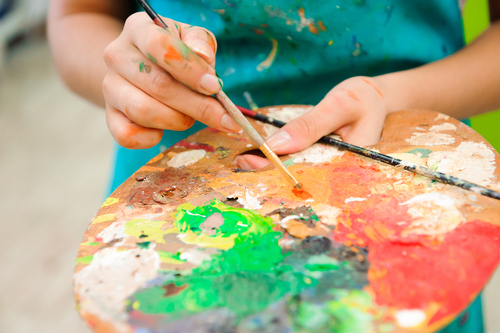
Music therapy plays a crucial role in promoting mental health by harnessing the therapeutic potential of music. Psychology Today asserts that all forms of music “may have therapeutic effects, although music from one’s own culture may be most effective. In Chinese medical theory, the five internal organ and meridian systems are believed to have corresponding musical tones, which are used to encourage healing. Types of music differ in the types of neurological stimulation they evoke.” Music can be used as a regulating or calming agent for anxiety or for dysregulation, as it acts as a medium for processing emotions, trauma, and grief. Formal music therapy was defined and first used by the United States War Department in 1945 to help military service members recovering in army hospitals with occupational therapy, education, recreation, and physical reconditioning.
Music Therapy Basics
Music therapy is an evidence-based therapy that, according to Cleveland Clinic, relies on “the clinical use of music to accomplish individualized goals such as reducing stress, improving mood and self-expression… [and] may include listening, singing, playing instruments, or composing music.” Rather than focusing on verbal articulation and communication, music therapy emphasizes listening to and creating music as a form of healing. Music therapy stimulates cognitive functions and memory, making it a particularly advantageous method of treatment for people with conditions like dementia. Music therapy is administered by a board-certified music therapist. It may be conducted in an individual or group setting and can be used in conjunction with other therapeutic modalities or on its own.
Mental health refers to emotional, cognitive, and behavioral well-being. It is described by the World Health Organization (WHO) as “a state of well-being in which the individual realizes his or her own abilities, can cope with the normal stresses of life, can work productively and fruitfully, and is able to make a contribution to his or her community.” Music therapy is a well-regarded and versatile intervention that can address various aspects of mental health. There is a plethora of advantages to music therapy, including psychological, emotional, physical, spiritual, cognitive, and social benefits. The American Music Therapy Association explains that participating in music therapy can help:
- Lower blood pressure.
- Improve respiration.
- Reduce heart rate.
- Improve cardiac output.
- Relax muscle tension.
- Lower levels of anxiety.
- Increase pain threshold.
- Improve memory.
- Enhance motivation.
Music therapy plays a significant role in mental health treatment, offering a unique avenue for expression and communication. It serves as a valuable and integrative component in mental health care, contributing to the well-being and healing of individuals across diverse contexts.
Treatment In Calabasas
Calabasas is a city in California. It is a well-known suburb of Los Angeles, located west of the San Fernando Valley and north of the Santa Monica Mountains. Over the past decade, the city of Calabasas has grown in its reputation for luxury as well as for privacy which makes it a hidden gem for residential living for society’s elite, and one of the most desirable destinations in Los Angeles County. It is also home to a plethora of highly qualified mental health clinicians providing an array of therapeutic services and treatment options.
The information above is provided for the use of informational purposes only. The above content is not to be substituted for professional advice, diagnosis, or treatment, as in no way is it intended as an attempt to practice medicine, give specific medical advice, including, without limitation, advice concerning the topic of mental health. As such, please do not use any material provided above to disregard professional advice or delay seeking treatment.


